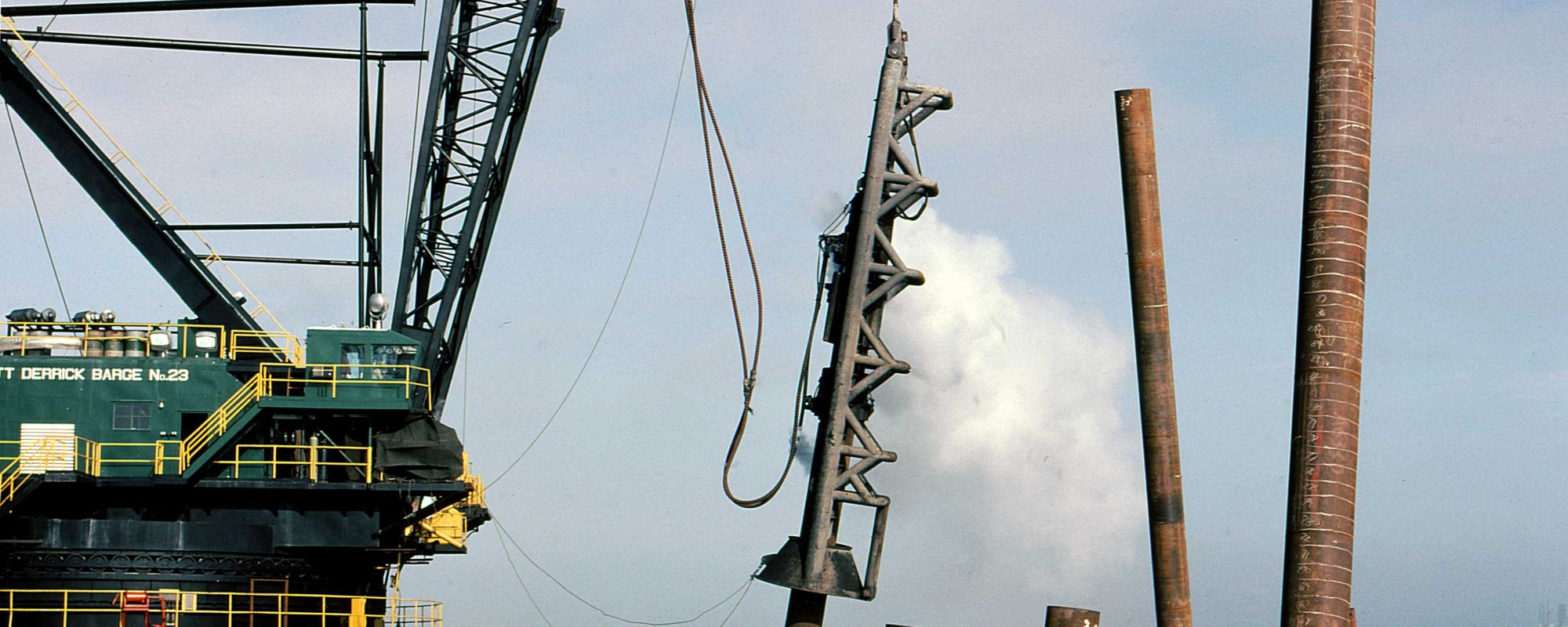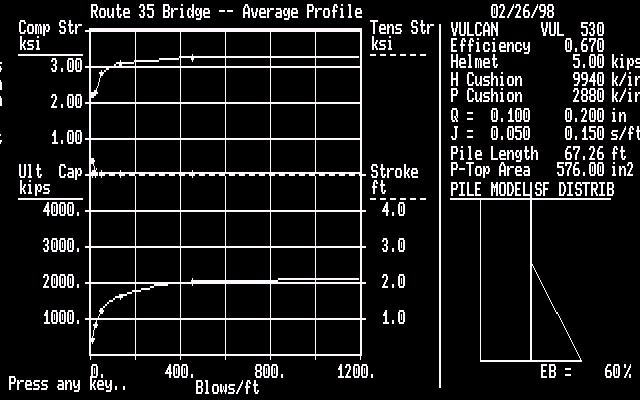The discontinuation of the TAMWAVE wave equation program has left something of a void in our offerings. This post explores the alternatives that we have on hand, primarily for educational purposes. (All offerings of this site are subject to the Terms and Conditions of This Site.) The Problems When the first geotechnical site of this family … Continue reading The Wave Equation after TAMWAVE: Alternatives and Substitutes
Category: Drivability and Vulcan Hammers
Some Lessons from “Savinov and Luskin”
One of the mysteries of geotechnical engineering relative to driven piles is why the Soviets, with their mathematical prowess, never applied wave mechanics to predict the performance of pile driving systems using the wave equation. In a sense this book, which is a classic in the geotechnical literature, answers that, but not in a direct … Continue reading Some Lessons from “Savinov and Luskin”
About the Bearing Capacity of Piles Driven by Vibration
For the entire book, click here. This is something of the "Holy Grail" of the whole vibratory project: the ability to estimate the static capacity of piles driven by vibration. The Soviets took up the question early in the development of these machines and ran into the same obstacles that most everyone since then has … Continue reading About the Bearing Capacity of Piles Driven by Vibration
Comments on “Using the Impulse–Response Pile Data for Soil Characterization”
It’s citation time again; this paper, authored by Heeyong Huh, Heedong Goh, Jun Won Kang, Stijn François and Loukas F. Kallivokas, cites both Closed …Comments on “Using the Impulse–Response Pile Data for Soil Characterization”
Comments on “Fictitious soil pile model for dynamic analysis of pipe piles under high-strain conditions” — vulcanhammer.net
Manufacturing Piles Using Vibration Technology
To access the rest of the book, click here. Editor's Note: for the most part this concerns a topic that U.S. contractors would consider drilled shafts. (The term here is "filled piles;" the literal translation of the Russian term is "stuffed piles," which driven pile people might find amusing, but I thought it would be … Continue reading Manufacturing Piles Using Vibration Technology
The Case Method: An Overview and Worked Example
In my recent post Dynamic Measurement of Piles the Case Method was brought up and outlined. The Case Method is one of the oldest methods developed to estimate the static capacity of piles from dynamic measurements. The method is detailed in the FHWA document Design and Construction of Driven Pile Foundations; this will serve as an … Continue reading The Case Method: An Overview and Worked Example
Dynamic Measurement of Piles
Editor's Note: This monograph was produced by Petro-Dynamics, Lafayette, LA. It was undated; it probably was produced in the early 1980's and was disseminated at the Offshore Technology Conference. Although it is around four decades old, the basic concepts of the Case Method and CAPWAP are still in use today. One thing that surprises is … Continue reading Dynamic Measurement of Piles
The Dennis and Olson Method for Determining the Static Capacity of Driven Piles
Don C. Warrington, PhD., P.E., University of Tennessee at ChattanoogaOrignal Date May 2011Revised September 2017 Methods of estimating the static capacity of driven pile are almost as numerous as the dynamic formulae of years past. As was the case with dynamic formulae, some have become embedded in codes, standards and the literature. All of these, … Continue reading The Dennis and Olson Method for Determining the Static Capacity of Driven Piles
Comparing Rigid Piles with Semi-Infinite Piles/Wave Equation Piles
In our last post A Tale of Two Coefficients of Restitution we discussed the development of equations of motion for impacting rams and piles that included a spring between them. This spring is bilinear using the coefficient of restitution. We showed that the behaviour of the ram and pile is the same with the spring in … Continue reading Comparing Rigid Piles with Semi-Infinite Piles/Wave Equation Piles







